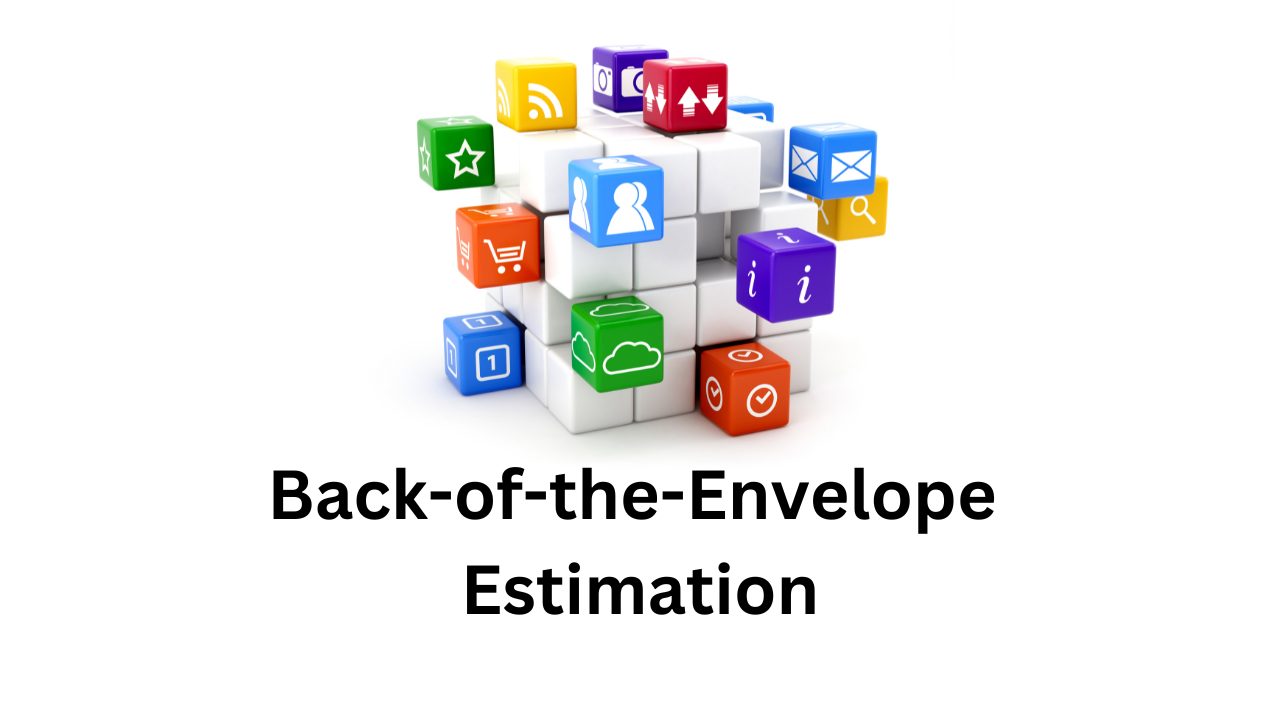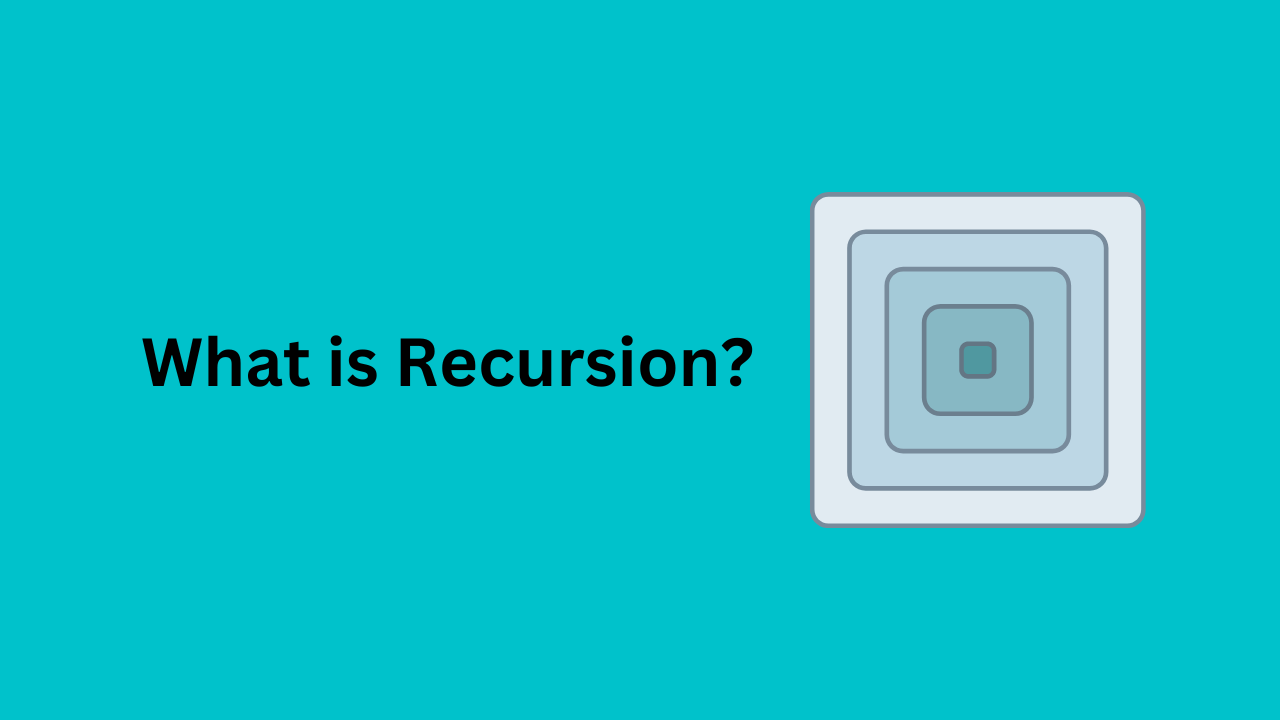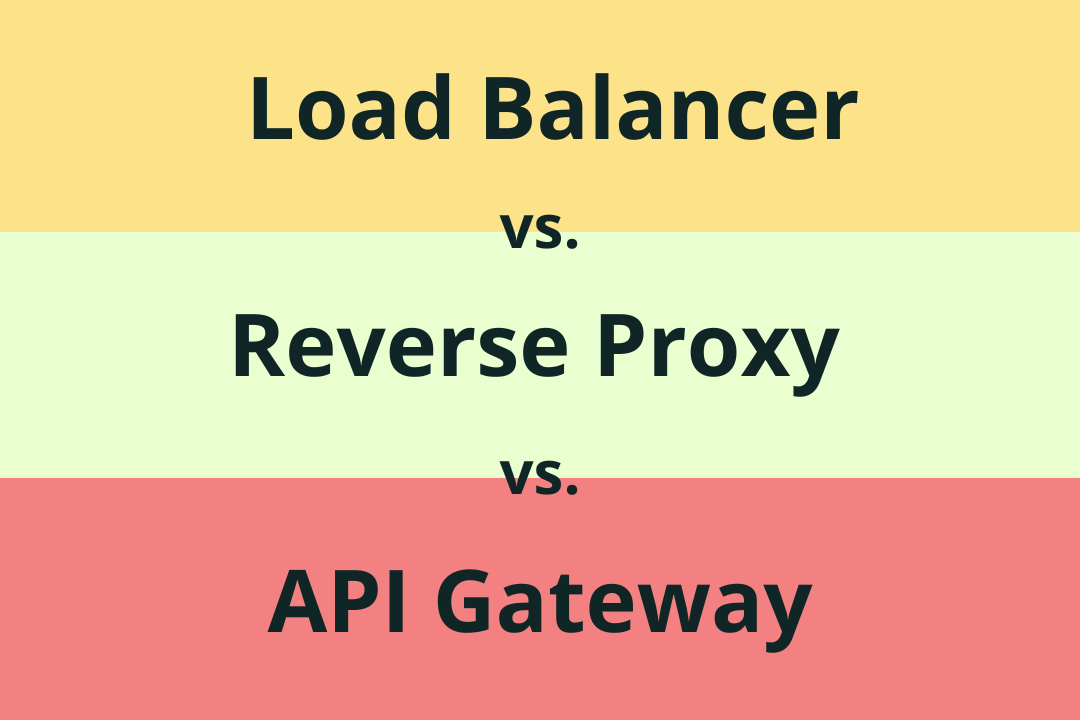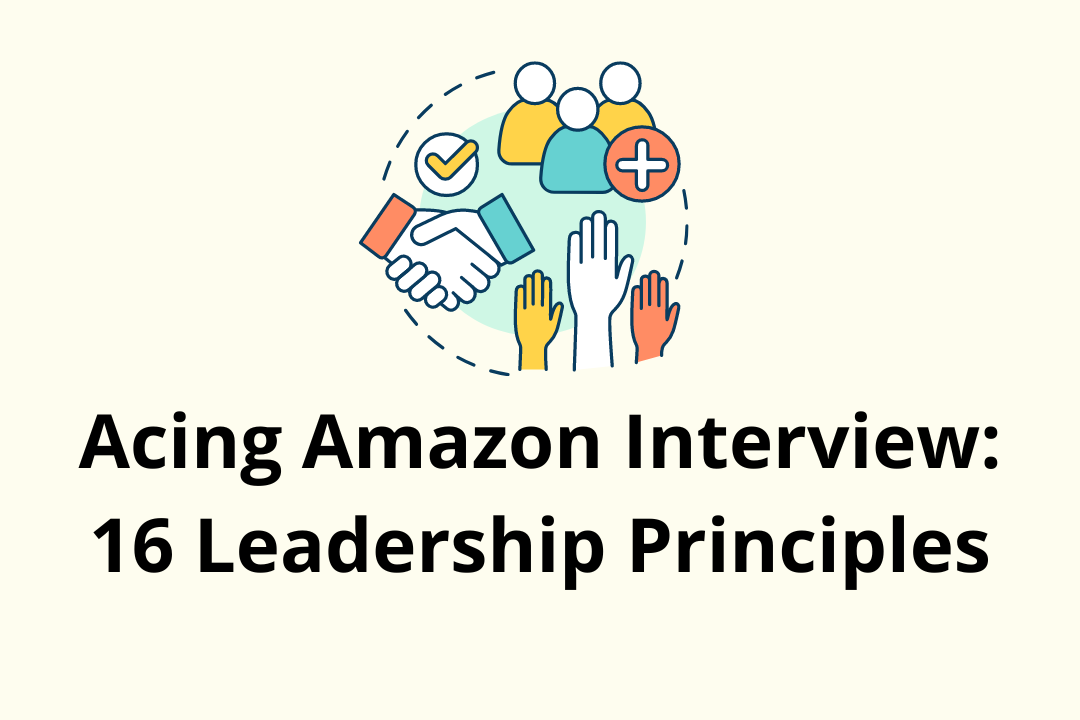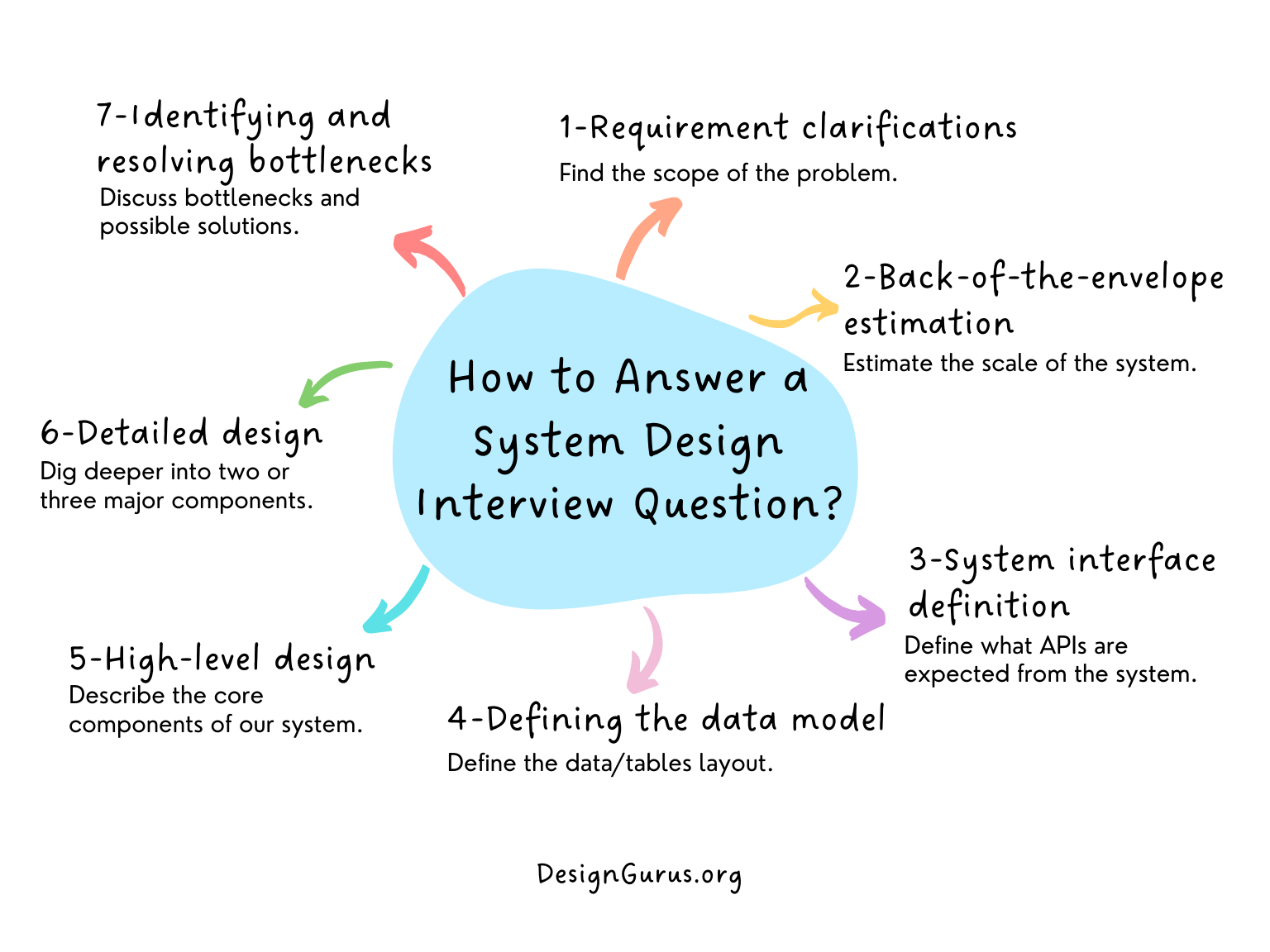How To Clear System Design Interview: A Quick Guide
If you're a software engineer looking to step into the tech industry, the system design interview can often feel like a big step. It's where you get to show off your understanding of complex systems and your ability to scale them effectively.
Don't worry if you're new to this—everyone starts somewhere!
Let's break down the stress around this interview into the different types, ensuring you're well-prepared to handle whatever comes your way.
What is a System Design Interview?
A system design interview is a common part of the hiring process for technical roles, particularly those that involve working on large-scale systems.
While coding interviews focus on individual algorithms and problem-solving skills, system design interviews assess your ability to design entire systems, such as a social media site or a digital wallet application.
These interviews are less about coding and more about your approach to solving high-level problems, demonstrating your understanding of architectural and engineering principles.
They can vary widely depending on the company or the specific role you're applying for, but they generally fall into different types.
Learn more about System Design Interviews and the types of questions you must prepare.
Types of System Design Interview
Every company and even every interviewer can follow a different style to conduct the system design interview.
You don't need to focus much on the differences, however, it is important to know about the different types of interviews to prepare accordingly.
1. Product Design
Product design is the most common type of system design interview.
In a "product design" type of system design interview, you're essentially being asked to create a blueprint for how a specific tech product works on the back end.
Think of it like being given a task to plan out how the engine and inner workings of a car should be structured so it runs smoothly but for a tech product instead of a car.
Here’s how it generally goes down:
What Happens in a Product Design Interview?
You'll be presented with a problem that involves designing a system behind a product or service.
This isn’t about just discussing what the product looks like or how users interact with it directly. It's more about figuring out how the product operates on a technical level.
You'll need to think about how data moves through the system, how different parts of the system communicate with each other, and what technologies might be used to make everything work efficiently.
Examples of Product Design Interview Questions
Here are a couple of examples to illustrate what you might be asked:
1. Design a Chat Application: Imagine you need to create the system for a messaging app similar to WhatsApp or Slack. Your task would be to figure out how messages are sent and received in real-time, how the app ensures that messages aren’t lost even if your internet connection is spotty, and how the app keeps track of who you are and whether you're authorized to see the messages.
2. Design a Ride-Sharing Service: Think about an app like Uber or Lyft. You'd need to design a system that matches passengers with drivers, processes payments, and calculates the price of each ride based on distance and travel time. It should also handle real-time updates of vehicles' locations and manage the data of millions of users.
How to Approach These Problems
When tackling problems like these, you'd typically start by asking questions to clarify the scope of what you're designing.
For example, you might ask if the chat app needs to support both one-on-one and group messaging, or if the ride-sharing app needs to account for different types of vehicles like bikes and scooters.
Once you've defined what needs to be built, you’d sketch out a basic architecture. This means deciding on the main components of the system, such as:
-
For a chat app: A server to handle messages, databases to store them, and security measures to protect user data.
-
For a ride-sharing app: A location tracking system, a matching algorithm to pair drivers and riders, and a pricing model. You’ll need to explain why you chose each component and how they all fit together to make the product work as expected.
Why It's Important
This kind of interview tests your ability to design complex systems and to think through the technical challenges and solutions that will affect how well the product performs.
It's not just about knowing how to code; it's about understanding how different parts of a tech system can be put together to create a product that’s reliable and effective.
By focusing on these elements, you show that you can handle the practical challenges of building the tech that powers the features and functionalities users see and use.
2. Infrastructure Design
An "infrastructure design" type of system design interview focuses on planning out the underlying systems that support and enable applications to run effectively.
Unlike the product design type, which deals with the design of specific products, infrastructure design is more about the backbone technologies that keep any online service running smoothly.
What Happens in an Infrastructure Design Interview?
In these interviews, you are tasked with creating a design for the parts of a system that are crucial for its operation but aren't necessarily seen by the end users.
Think of it like designing the electrical and plumbing systems of a new building — they're essential for making everything work, but they operate behind the scenes.
Examples of Infrastructure Design Interview Questions
Here are some common scenarios you might encounter:
1. Design a Message Broker: A message broker is a system that helps different parts of an application to communicate with each other without being directly connected.
Imagine a large hospital where various departments (like emergency, billing, and surgery) need to exchange information quickly and securely but are not always online at the same time.
A message broker would manage these communications efficiently, ensuring that messages are not lost and are delivered as soon as the recipient is available.
2. Design a Rate Limiter: A rate limiter controls how often users can access a service within a certain period.
For example, a news website might use a rate limiter to prevent a single user from hitting 'refresh' hundreds of times per second, which could overwhelm the website's servers and make the site slow or unavailable to other users.
How to Approach These Problems
When addressing infrastructure design problems, it's essential to start by defining the exact requirements and constraints of the system. Questions to consider might include:
- What volume of data or number of messages will the system need to handle?
- How critical is it that every piece of data or every message is processed without loss? 3, What are the expected peaks in demand, and how can the system remain stable during those times?
After clarifying these points, you would outline a high-level design that includes:
-
For a message broker: How messages are stored temporarily when recipients are not online, how the system ensures that messages are delivered once the recipient is available, and how it handles errors or data losses.
-
For a rate limiter: How the system tracks the number of requests from each user, how it decides when to deny access, and how it informs the user of their limits.
Why It's Important
Infrastructure design is critical because it ensures that systems are reliable, scalable, and capable of handling the demands of potentially millions of users without degradation of performance.
This type of interview evaluates your ability to think about systems at a high level, particularly your understanding of how to build robust back-end infrastructures that can support complex applications.
By focusing on the architecture that supports software applications, infrastructure design demonstrates your proficiency in creating systems that aren't just functional but are also scalable, secure, and efficient.
This skill is invaluable for any system that needs to operate at a large scale or handle sensitive information.
Master the System Design Interview to land your dream job in tech industry.
3. Object Oriented Design
An "object-oriented design" (OOD) type of system design interview focuses on evaluating your ability to use object-oriented programming principles to solve software design problems.
This approach breaks down a problem into smaller, manageable parts using objects, which are instances of classes that represent a combination of data and methods.
What Happens in an Object-Oriented Design Interview?
In these interviews, you're typically given a scenario where you need to design a system or a part of a system using object-oriented concepts.
This type of interview tests your understanding of key object-oriented principles such as encapsulation, inheritance, and polymorphism, and your ability to apply them to create a clean, modular, and scalable design.
Examples of Object-Oriented Design Interview Questions
Here are a few examples that illustrate the kind of tasks you might face:
1. Design a Parking Lot System: Imagine you need to design a system to manage a parking lot. You would be asked to consider how to keep track of parked cars, how to calculate the parking fee, and how to find empty parking spots.
In this case, you might create classes like ParkingLot, ParkingSpot, Car, and TicketMachine. Each class would have specific responsibilities, like Car storing details about the car, and ParkingSpot keeping track of whether it is occupied.
2. Design a Vending Machine: In this scenario, you're tasked with designing a vending machine system. Classes might include VendingMachine, Item, PaymentProcessor, and Dispenser.
Each class handles different aspects of the vending machine's operation, such as managing inventory, processing payments, and dispensing products.
How to Approach These Problems
When tackling an OOD problem, it's useful to follow these steps:
1. Understand the Requirements: Clarify what the system needs to do and any specific functionalities that must be included. This helps in defining the scope of your design.
2. Identify the Key Objects: Think about the main components of the system you're designing. These will form the basis of your classes.
3. Define Relationships: Determine how these objects will interact with one another. For instance, in a parking lot system, ParkingSpot might need to know if it is occupied by a Car.
4. Outline the Class Structure: For each class, decide what data it needs to store and what actions it should be able to perform.
5. Think About Reusability and Scalability: Ensure your design allows for easy modifications and additions in the future.
This could mean using inheritance to extend the functionalities of existing classes or designing interfaces for classes to implement.
Why It's Important
Object-oriented design interviews are crucial because they show how you organize and structure software.
They give interviewers insight into your ability to think logically and write code that is easy to read, maintain, and expand.
This type of design is prevalent in software development, so these interviews are especially important for roles that involve a lot of coding and software architecture.
By designing systems in an object-oriented way, you help ensure that software is modular (i.e., broken down into interchangeable modules or parts), which makes it easier to test, maintain, and scale.
This approach aligns well with real-world programming environments, where changes are frequent and systems can become very complex.
4. Front-end Design/API Design
A "front-end design/API Design" type of system design interview specifically focuses on the elements of a software application that users interact with directly.
In these interviews, your task is to plan the structure and features of a website or application’s interface—the parts that users see and interact with on their devices.
What Happens in a Front-End Design/API Design Interview?
During a front-end design/API Design interview, you're expected to demonstrate how you would architect the user-facing part of an application.
This includes discussing how to structure the layout, manage user interactions, and ensure that the application performs well across different devices and browsers.
This type of interview tests your knowledge of web technologies, user interface design principles, and your ability to create a seamless user experience.
Examples of Front-End Design/API Design Interview Questions
Here are a couple of examples to give you a clearer picture:
1. Design the Front End for a Spreadsheet Application: You might be asked to plan the user interface for an online spreadsheet program similar to Google Sheets.
This would involve thinking about how users input data, navigate between cells, and use features like formulas and charts. Your design would need to handle complex interactions smoothly and keep the interface responsive and easy to use.
2. Design the Front End for a Video Editor: For this, you would need to consider how to layout controls for editing video clips, adding effects, and exporting the final video.
This task involves a good deal of thought about user workflows, as well as technical considerations to ensure that the application runs efficiently, even with heavy video files.
How to Approach These Problems
When faced with a front-end design/API Design problem, you might follow these steps:
1. Clarify the Requirements: Understand what functionalities the application needs to have. Determine the target audience and any specific needs they might have.
2. Sketch the User Interface: Outline what the main screens and elements of the application will look like. Consider user navigation paths and what happens when users interact with various parts of the application.
3. Discuss Technologies: Talk about which technologies and frameworks you would use to build the application. For example, you might choose React for its efficient updating of user interfaces, or Bootstrap for responsive design that adapts to different screen sizes.
4. Consider Performance and Scalability: Explain how you would ensure the application loads quickly and can handle a large number of users or large amounts of data without slowing down.
5. Focus on User Experience: Emphasize how you would design the interface to be intuitive and user-friendly. Mention any specific design principles you would apply to enhance usability.
Why It's Important
Front-end design/API Design interviews are important because the front end is what users first encounter when they use an application.
A well-designed front end can make the difference between an application that is a pleasure to use and one that frustrates and turns away potential users.
These interviews show your ability to not just make something that looks good, but also works well and meets the needs of the users. It’s about combining aesthetics with functionality and ensuring that the application performs well under various conditions.
This type of interview is crucial for roles that require strong skills in both design and technology, such as front-end developers or full-stack developers who handle both the front end and back end of web applications.
Wrapping Up
As you prepare for your system design interviews, it is important to clearly understand the specifics of each system design interview type and practice with scenarios that might come up.
Understanding what to expect and having a strategy for each scenario will not only boost your confidence but also sharpen your problem-solving skills.
This way, you can walk into your interviews ready to tackle any challenge and demonstrate your comprehensive understanding of system design.
Find out the best System Design Courses for Interviews.
Join Grokking the System Design Fundamentals course today!
